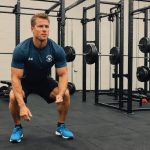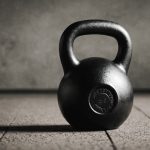Mastering Safe Lifting: Essential Techniques for Powerlifters to Avoid Injuries
When it comes to powerlifting, the pursuit of strength and performance is often balanced against the risk of injury. To ensure that you can lift heavy weights safely and effectively, it’s crucial to master the proper techniques and practices that underpin this sport. Here’s a comprehensive guide to help you navigate the world of powerlifting with minimal risk of injuries.
Understanding the Core Lifts
Powerlifting revolves around three main lifts: the squat, the bench press, and the deadlift. Each of these lifts engages multiple muscle groups and requires precise technique to execute safely.
Also to discover : Maximizing Training Efficiency: Strategies for Professional Cyclists Competing in Multi-Stage Races
Squat
The squat is a compound movement that targets the legs, hips, and lower back. To perform a squat safely, focus on maintaining proper form:
- Stance: Stand with your feet slightly wider than shoulder width, toes pointed outward.
- Descent: Lower yourself down by bending your knees and hips, keeping your back straight and your core engaged.
- Ascent: Push through your heels to return to the starting position, squeezing your glutes and quads at the top[1].
Bench Press
The bench press is a upper body exercise that works the chest, shoulders, and triceps. Key points for safe execution include:
Also read : Mastering the Lanes: Essential Technique Adjustments for Professional Bowlers Facing Diverse Conditions
- Grip: Hold the barbell with a grip slightly wider than shoulder width.
- Lowering: Lower the bar to your chest, keeping your elbows close to your body.
- Pressing: Press the bar upwards, extending your arms fully before lowering it again[1].
Deadlift
The deadlift is a full-body exercise that engages the back, core, legs, and grip. Here are the essential steps:
- Stance: Stand with your feet about 4-6 inches apart, toes pointed slightly outward.
- Grip: Hold the barbell with a narrow grip, just outside your legs.
- Lift: Lift the bar by pushing with your feet and maintaining lumbar extension, keeping the bar close to your legs throughout the lift[4].
Breathing Techniques for Safe Lifting
Proper breathing is vital for maintaining stability and control during heavy lifts. Here’s how to incorporate effective breathing techniques into your routine:
Diaphragmatic Breathing and the Valsalva Maneuver
- Inhalation: Take a deep breath into your diaphragm before starting the lift.
- Bracing: Hold the breath and brace your core as if lifting a heavy object.
- Exhalation: Exhale slowly as you return to the starting position. This technique helps in creating a stiffer, safer movement[3].
Table: Breathing Techniques for Common Resistance Training Exercises
| Exercise | Inhalation Phase | Exhalation Phase |
|---|---|---|
| Squat | Before descending | As you stand up |
| Bench Press | Before lowering the bar | As you press the bar up |
| Deadlift | Before lifting the bar | As you stand up with the bar |
| Row | Before pulling the weight | As you return to the starting position |
Building Core Strength for Better Form
A strong core is essential for maintaining proper form and preventing injuries during heavy lifts.
Why Core Strength Matters
- Stability: A strong core provides the stability needed to maintain proper form under heavy loads.
- Injury Prevention: Weak core muscles can lead to poor form, increasing the risk of injury to the back and other areas[3].
Exercises for Core Strength
- Planks: Hold a plank position for 30-60 seconds to engage your entire core.
- Side Planks: Target the obliques with side plank exercises.
- Leg Raises: Engage your lower abs with leg raise exercises.
Using Equipment to Enhance Safety
While proper technique is paramount, certain pieces of equipment can further reduce the risk of injury.
Knee Sleeves
- Support: Provide additional support and stability for the knees during squats and deadlifts.
- Warmth: Keep the knees warm, which can improve flexibility and reduce the risk of injury.
Wrist Wraps
- Stability: Offer additional wrist stability during heavy lifts like the bench press and deadlift.
- Prevent Strain: Help prevent wrist strain and injury by providing support.
Practical Tips for Injury Prevention
Here are some practical tips to help you prevent injuries and maintain safe lifting practices:
Warm-Up and Cool-Down
- Warm-Up: Always warm up before your lifting session with light cardio and dynamic stretches.
- Cool-Down: Cool down after your session with static stretches to help your muscles recover.
Progressive Overload
- Gradual Increase: Gradually increase the weight you lift over time to avoid sudden spikes that can lead to injury.
- Consistency: Consistency in training is key; avoid skipping workouts and then trying to lift heavy weights after a break.
Listen to Your Body
- Rest: If you feel fatigued or experience pain, take a rest day or modify your lifts accordingly.
- Seek Advice: Work with a coach or experienced lifter to identify and correct any form issues.
Detailed Checklist for Safe Lifting
Here’s a detailed checklist to ensure you’re lifting safely:
Before the Lift
- Warm-Up: Complete a thorough warm-up.
- Equipment Check: Ensure all equipment is in good condition.
- Spotter: Have a spotter present, especially for heavy lifts.
During the Lift
- Proper Form: Maintain proper form throughout the lift.
- Breathing Technique: Use the correct breathing technique.
- Core Engagement: Engage your core muscles to maintain stability.
After the Lift
- Cool-Down: Cool down with static stretches.
- Recovery: Focus on recovery techniques such as foam rolling and nutrition.
Quotes from Experts
- “Proper form is not just about lifting safely; it’s also about maximizing your performance. When you lift with proper form, you engage the right muscle groups and avoid unnecessary strain on your joints,” – Matt Reynolds, Powerlifting Coach[1].
- “Breathing techniques are often overlooked but are crucial for maintaining stability and control during heavy lifts. The valsalva maneuver, for example, can help you lift heavier weights safely,” – Dr. John Smith, Sports Physiologist[3].
Mastering safe lifting techniques is a cornerstone of powerlifting. By focusing on proper form, breathing techniques, core strength, and the use of appropriate equipment, you can significantly reduce your risk of injury and enhance your overall performance. Remember, safety and strength go hand in hand in the world of powerlifting.
Final Tips
- Patience: Be patient with your progress; building strength and mastering techniques takes time.
- Consistency: Consistency is key; regular training and practice will help you develop muscle memory and improve your form.
- Seek Help: Don’t hesitate to seek help from coaches or experienced lifters if you’re unsure about any aspect of your lifting technique.
By following these guidelines and tips, you’ll be well on your way to becoming a safe and effective powerlifter. Happy lifting












